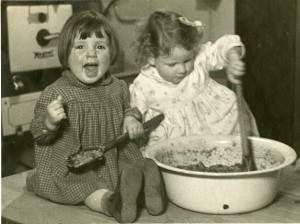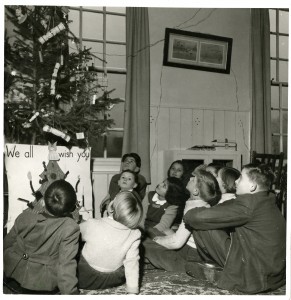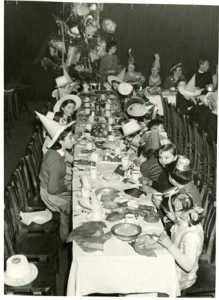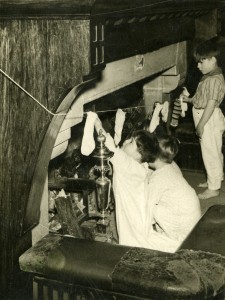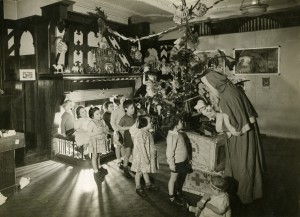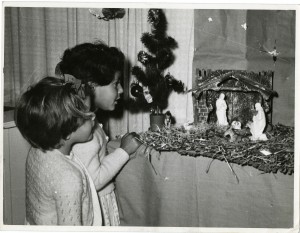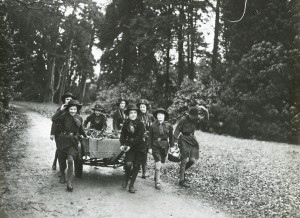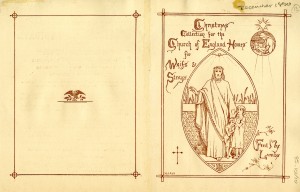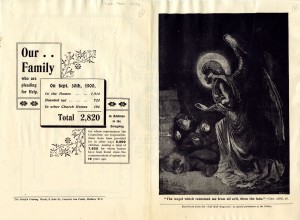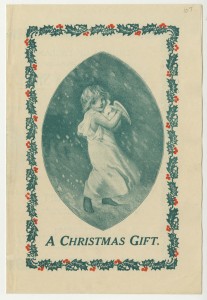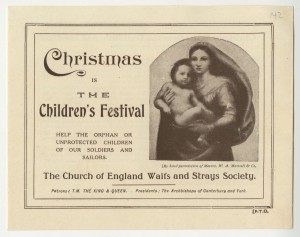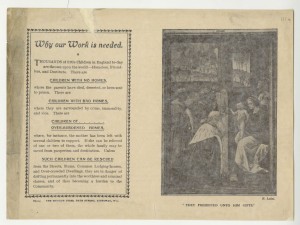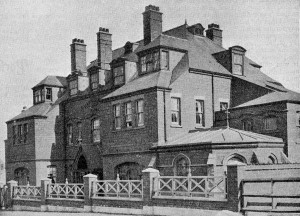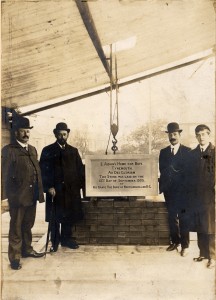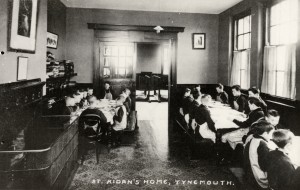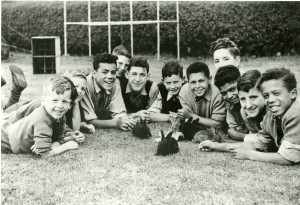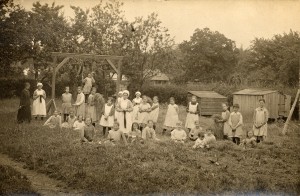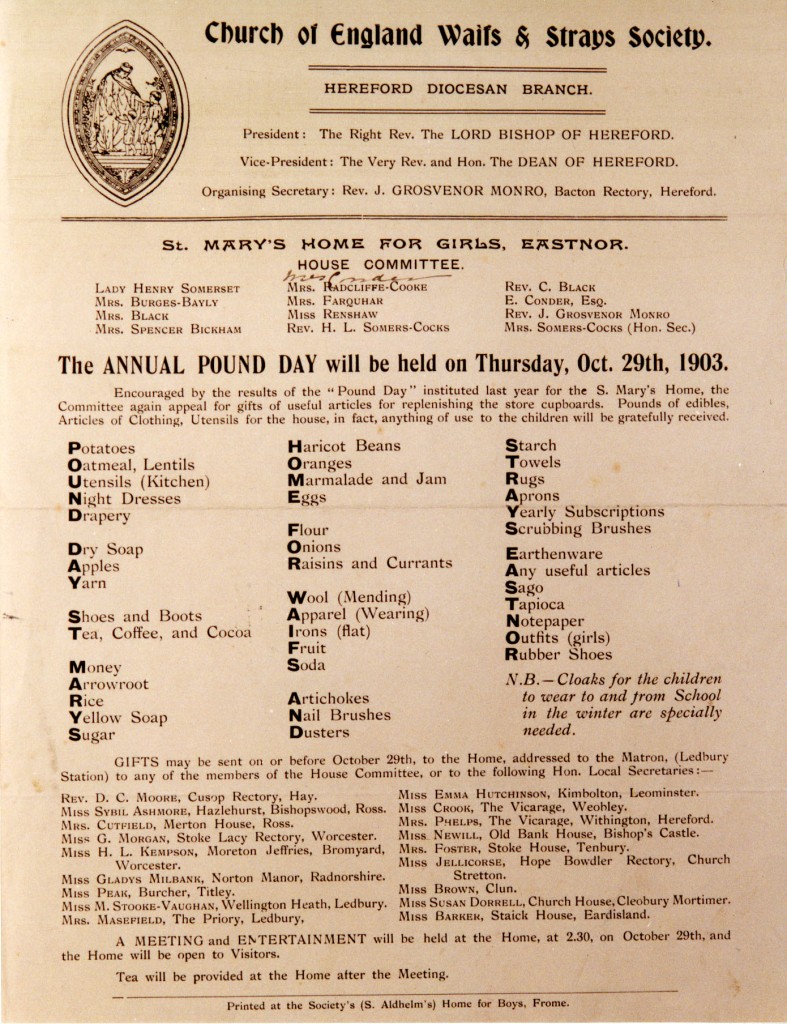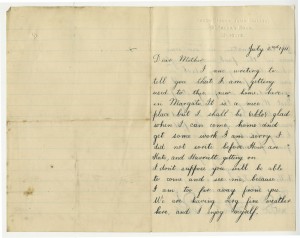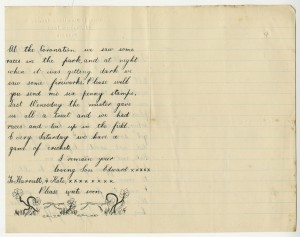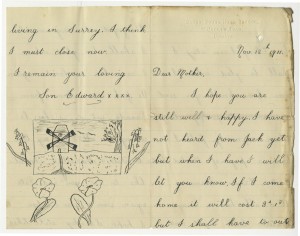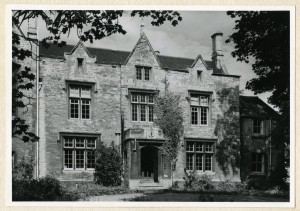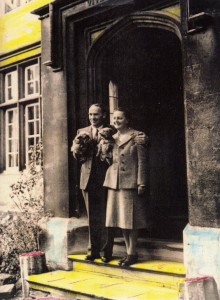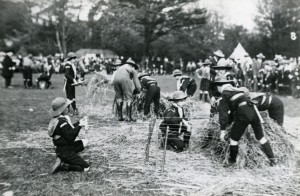A festive post written by one of The Children’s Society Archive team, Clare McMurtrie.
As the First Day of Christmas, or the 25th December, draws upon us we look at twelve Christmas traditions that have formed part of The Children’s Society’s Christmas celebrations for over a century, from the time when it was known as the ‘Waifs and Strays Society’. Discover twelve festive images and stories from The Children’s Society Archive, each one representing one of the Twelve Days of Christmas (or Twelvetide), as you open our visual Christmas calendar.
1 – Christmas pudding: Stir-up Sunday is an informal term in Anglican churches for the last Sunday before the season of Advent. The Christmas pudding is one of the essential British Christmas traditions and is said to have been introduced to the Victorians by Prince Albert, husband of Queen Victoria. The meat-less version was originally introduced from Germany by George I in 1714. Traditionally children gathered together in the kitchen of some of The Society homes to stir the Christmas pudding on Stir-up Sunday. (Oxford English Dictionary, Second edition, 1989 (first published in New English Dictionary, 1917).
2 – Christmas tree: The custom of the Christmas tree developed in early modern Germany, with predecessors that can be traced to the 16th and possibly 15th century, in which devout Christians brought decorated trees into their homes. It acquired popularity beyond Germany during the second half of the 19th century. The photo above shows children in one of The Society’s children’s homes in the 1940s alongside their Christmas tree. (Ingeborg Weber-Kellermann (1978), Das Weihnachtsfest. Eine Kultur- und Sozialgeschichte der Weihnachtszeit (Christmas: A cultural and social history of Christmastide (in German). Bucher, p. 22.)
3 – Christmas party time: This photograph from the 1950s shows children from one of The Society’s homes enjoying tea at a large Christmas party.
4 – Christmas stocking: A tradition that began in a European country originally, children simply used one of their everyday socks, but eventually special Christmas stockings were created for this purpose. The Christmas stocking custom is derived from the Germanic/Scandinavian figure Odin. According to Phyllis Siefker, children would place their boots, filled with carrots, straw, or sugar, near the chimney for Odin’s flying horse, Sleipnir, to eat. Odin would reward those children for their kindness by replacing Sleipnir’s food with gifts or candy. (Siefker, Phyllis, Santa Claus, Last of the Wild Men: The Origins and Evolution of Saint Nicholas, Spanning 50,000 Years (chapter 9, especially pages 171-173, 2006).
5 – Father Christmas: This fascinating archive photo show eight small children in a Society home in the 1940s queuing to receive a present from Father Christmas, who is distributing toys from a Canadian Red Cross packing crate. (© Photo Press Limited)
6 – Nativity scene: The tradition of constructing nativity scenes first flourished in an Italian context in the Middle Ages, and dates back to St. Francis of Assisi, who created the first living representation of the nativity in 1223 in Greccio, Lazio. The scene designed by St. Francis lacked Mary, Joseph and the Baby Jesus, however, and only the ox, the donkey and the manger with straw present in the cave. The first known complete nativity scene is that kept in the Basilica of Santo Stefano in Bologna. (http://www.swide.com/art-culture/nativity-scene-5-things-to-know-about-history-and-origin/2014/12/21)
7 – Wartime Girl Guides: Eight Girl Guides from Maurice Home for Girls in Ascot, Berkshire, show wartime festive spirit pulling a cart full of wood along a road in 1945.
8 – Feed My Lambs: This fundraising flyer, depicting an adult Jesus with two young ‘waifs’, was issued in Our Waifs and Strays magazine in December 1890.
9 – Our Family: This fundraising flyer from Our Waifs and Strays magazine in December 1900, features an angel and sleeping child. Alongside is a plea for donations to The Society’s funds to support its children.
10 – ‘A Christmas Gift’. An illustration in a fundraising flyer for Our Waifs and Strays magazine, December 1911, depicting the Dove of Peace being held by a child.
The Dove of Peace: According to the biblical story (Genesis 8:11), a dove was released by Noah after the flood in order to find land; it came back carrying an olive branch in its beak, telling Noah that, somewhere, there was land. Christians used Noah’s dove as a peace symbol.
11 – Christmas is the Children’s Festival: The fundraising flyer issued in Our Waifs and Strays magazine in December 1917, and features the Biblical image of mother and child.
12 – ‘They presented unto him gifts’: Twelfth Night is a festival, in some branches of Christianity marking the coming of the Epiphany. The Church of England, celebrates Twelfth Night on the 5th and “refers to the night before Epiphany, the day when the nativity story tells us that the three wise men visited the infant Jesus”. The fundraising flyer above was issued in Our Waifs and Strays magazine in the New Year of 1912, and is illustrated by Italian Renaissance artist Bernardino Luini’s ‘Adoration of the Magi’. (Shorter Oxford English Dictionary, 1993).
See also:
268 years of Christingle: http://www.childrenssociety.org.uk/news-and-blogs/our-blog/267-years-of-christingle
The Children’s Society’s Christmas Bake and Brew campaign: http://www.childrenssociety.org.uk/what-you-can-do/fundraising-and-events/hold-a-bake-and-brew
Browse through publications of Our Waifs and Strays from 1882: http://www.hiddenlives.org.uk/publications/waifs_and_strays/
For information about The Children’s Society Archive’s ‘Hidden Lives Revealed’ web site: http://www.hiddenlives.org.uk/
or you can consult the Archive’s on-line catalogue: http://www.calmview.eu/childrensociety/Calmview
If you would would like to know about how The Children’s Society continues to change children’s lives today, visit the charity’s website: http://www.childrenssociety.org.uk/

